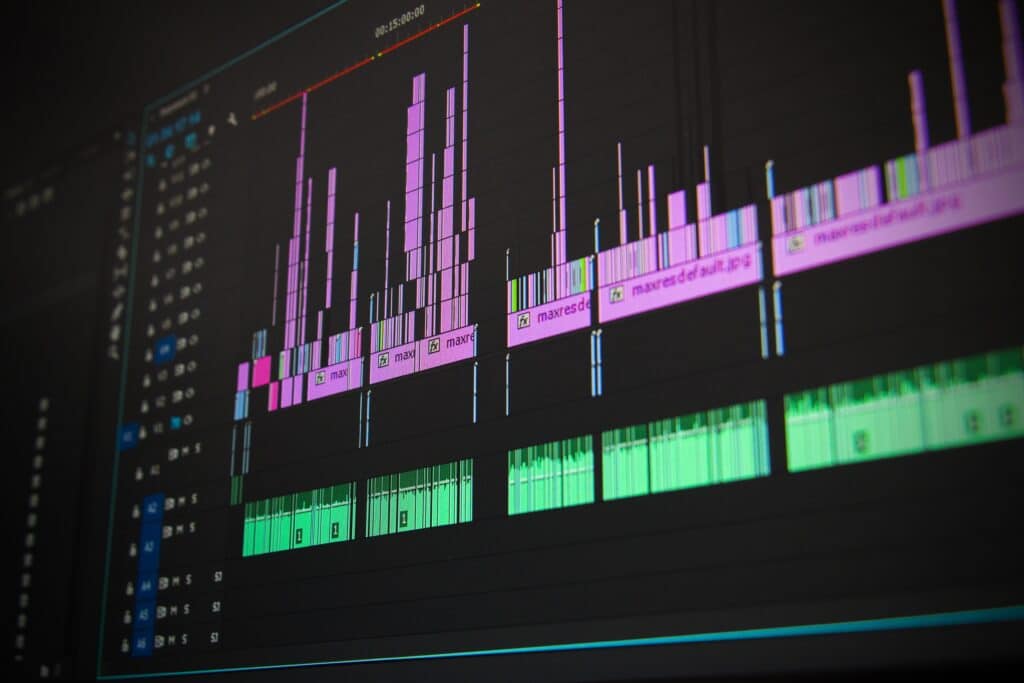So you want to make a movie, but where do you begin? First, you need to understand the stages of film production. Film production is a long, complicated process, but it can be broken down into five parts: development, pre-production, production, post-production, and distribution. Each stage differs in length and the types of tasks necessary to complete them. Let’s take a closer look at what exactly each stage entails.
Development
Perhaps the most nebulous stage of production, development begins when a screenwriter first puts pen to paper or a producer comes up with a brilliant new idea. This is the pre-planning phase before pre-production begins in earnest; ideas get brainstormed, the script gets written, producers pitch the idea trying to get funding. This can take anywhere from months to years before a studio green-lights a production.
For indie and micro-budget films, this process is much simpler; perhaps it’s a group of friends sitting around, tossing out ideas until they have enough to write a script, or perhaps it’s a crowdfunding campaign before pre-production begins. Either way, this stage of production can be a ton of fun. It’s an opportunity to dream before the production really gets underway.
Pre-production
Here we really get into the nitty-gritty. Pre-production is where every single thing that needs to happen before cameras start rolling happens. That means the script breakdowns, casting, location scouting, set designs, prop shopping, wardrobe design, all of it has to happen in this phase. What starts off as the job of a producer snowballs until you have a whole crew working to get the project camera-ready. This phase can last months from the time that a project is greenlit to the time that filming actually begins.
Pre-production is not glamorous. There are lots of meetings, phone calls, and extremely long email chains working out every last detail of the shoot. We’ve said it before and we’ll say it again: you can save so much time, effort, and money if you really buckle down and are thorough during the pre-production phase. Just because it’s not glamorous doesn’t mean it’s not hugely important.

Production
Production is probably what first comes to mind when you think about making a movie. This is where all the amazing ideas you came up with finally come to life. Production is typically the shortest of the five stages, although those long days and nights spent on set certainly don’t feel short. This is where the cameras start rolling, the actors get to do their thing, and you get to capture all the incredible shots you dreamed up during the first two phases. All the seeds you planted during pre-production, as it were, are finally sprouting, and you get to see what your movie is actually going to be like. That’s why it’s important that you have a good budget, a well-thought-out filming schedule, and a good cast and crew. All of those things will make for a low-stress, fun-filled shooting experience.
Post-production
Once you’ve wrapped on the production phase, it’s time to move into post-production. This is where, in my humble opinion, the magic really happens. The footage gets edited; the sound gets mixed; the visual effects get added; the color gets graded. If you did your job well during the first three phases, you should have a clear plan of attack and more than enough footage to work with.
The editing room is where a movie really gets made. You can have the best actors and most beautiful shots the world has ever seen, but if you drop the ball in post-production, the world will never know. This is also an opportunity to fix mistakes made during the first few phases; it’s what the experts call “fixing in post.” You may need to film pick-up shots during post-production, but unless something has gone terribly wrong, you’re not going to be refilming the majority of your scenes.

Distribution
So your movie is complete, and it’s magnificent. Surely you’re done, right? Well, unless you want it to collect dust on your computer hard drive, I regret to tell you that you are not, in fact, done. The final phase of filmmaking is distribution. There are many ways to go about this, depending on your goals for your film. You can work with a distribution company to get your film in movie theaters and on streaming services, you can self-distribute, or you can upload it to Youtube and call it a day. Any of these options are valid; it just depends on what you want for your film!
And then you’re done!
When you’re done with all five phases of filmmaking, there’s just one thing left to do; celebrate. Filmmaking at any level is really hard, and you deserve to be proud of yourself and your team for all your hard work. We hope that this brief outline of the stages of film production was helpful.

Leave a Reply